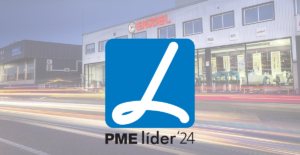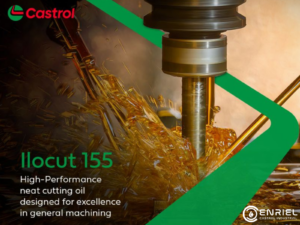High-performance industrial lubricant, key to operational efficiency.
‘That industrial lubricant is very expensive.’
This is a common phrase in technical meetings when evaluating industrial maintenance products.
But what if the ‘expensive’ lubricant ends up being the cheapest? What if investing a little more in high-performance lubricants generates a tangible return on investment in production, reliability and operating costs?
Spoiler: Yes, it does. And here we demonstrate it with real data and technical arguments.
The price per litre does not matter: what counts is the total cost of ownership (TCO)
Comparing lubricants as if they were simple commodities is a mistake. What matters is the total cost of ownership (TCO).
A premium industrial lubricant can:
![]() Multiply the service life of bearings and gears by up to five times.
Multiply the service life of bearings and gears by up to five times.
![]() Increase relubrication intervals.
Increase relubrication intervals.
![]() Reduce consumption due to evaporation or degradation.
Reduce consumption due to evaporation or degradation.
![]() Prevent catastrophic failures that can cost thousands of pounds.
Prevent catastrophic failures that can cost thousands of pounds.
All this translates into direct savings and tangible returns.
What is ROI in industrial lubrication?
ROI (Return on Investment) measures what you save or earn compared to what you invest.
In lubrication, it is calculated as follows:
ROI = (Savings generated – Additional investment) / Additional investment
Practical example:
✅ Switching from mineral grease to a premium grease such as Tribol GR 100-2 PD
- Additional investment: £5,000/year
- Labour savings: £2,500
- Spare parts savings: £4,000
- Savings from avoiding downtime: £8,000
ROI = 190% in just one year.
And that’s a moderate case.

Where do high-performance lubricants have an impact?
- Less corrective maintenance
High-performance lubricants maintain their properties for longer, provide better protection against wear and tear, and perform well under severe conditions (temperature, load, water). This prevents failures and unplanned downtime.
- Longer intervals
Many companies manage to double or triple change intervals when they switch to synthetic lubricants or premium formulations. Fewer changes = fewer staff hours
- Lower consumption
Well-formulated lubricants do not evaporate, do not degrade easily and remain stable in the presence of contaminants. This reduces the total volume required.
- More reliable predictive monitoring
High-quality lubricants respond better to predictive analysis. The data is more accurate, allowing you to anticipate failures and plan more intelligently.
Real-life case study: Cement industry saves £85,000 per year
- A cement plant replaced mineral oil with Castrol® Optigear BM 320 in its main gearbox:
- Change intervals increased from 6 to 18 months.
- Operating temperature reduced by 70%.
- Zero failures in 3 years (previously, one per year).
- Total estimated savings: £85,000 per year in spare parts, man-hours and lost production.
What influences a good ROI?
✔ Type of lubricant (premium vs. conventional)
✔ Operating conditions
✔ Plant downtime costs
✔ Maintenance labour
✔ Component service life
ROI is not the same in all plants. Analysing your specific case with a technical specialist is key. |
When to switch to premium lubricants?
If you answer ‘YES’ to any of these questions, now is the time:
- Do you have equipment subjected to extreme loads or high temperatures?
- Do you change lubricants frequently?
- Do you suffer from recurring breakdowns?
- Are you looking to reduce operating costs?
Then switching to Castrol high-performance industrial lubricants is profitable.
Thinking about price per litre is a thing of the past.
Investing in premium lubricants is not an expense, it is a medium-term savings strategy. Access our range of lubricants: Enriel Castrol Industrial
🔗 If you are looking for technical support to help you choose the right lubricant, measure your ROI and justify your investment, contact our team:
📞 Telephone: +34 900 730 795
📩 E-Mail: info@enrielcastrolindustrial.com





